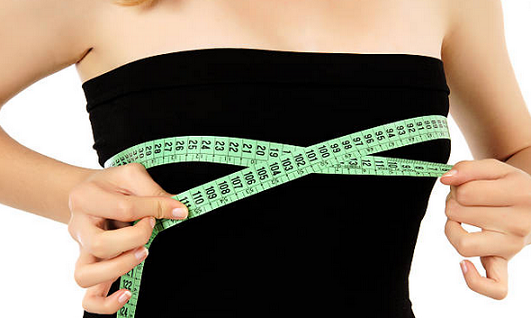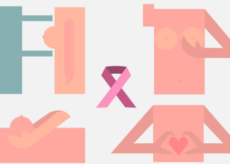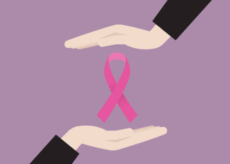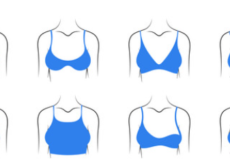9 things about breast every women should know
- April 10, 2020
- in Breast Care

At first glance, the breasts of two women can only seem to differ in their outward appearance, specifically speaking, in size.
It is not uncommon for women to compare their breasts to those of their mother, sisters, friends, or, why not, to those of celebrities, especially when it comes to size.
The main reason why women are dissatisfied with their breasts is usually because they consider them to be small, although it may also be due to the opposite: they do not like the excessive volume of their breasts. There are even those who suffer health problems, such as back pain due to weight. However, not everything is about the size of a woman’s breasts.
Breasts can vary in many other aspects, such as their shape, composition or even their nipples. Many times, all these characteristics are overlooked or unknown, but there are issues that are relevant not only for aesthetics but also for health, and therefore it is advisable that all women know.
Knowing these aspects can mean getting rid of complexes and helping them to be more comfortable with their breast. And, most importantly, even prevent health problems.
Let’s look at nine things about breasts that you should know:
(1) They develop in stages
Breast development in girls usually begins between the ages of 8 and 13. Breasts don’t just spring up overnight. It can be considered a kind of stage race.
First, a small mound emerges behind the nipple, the so-called ‘breast bud’, when the female hormone estrogen begins to perform its functions at the onset of puberty. Then the nipple and areola grow, which also darkens a little. Finally, the entire breast mass around the nipple develops.
(2) They are asymmetrical
During its development, it is normal for one breast to begin to sprout earlier than the other. This asymmetry is maintained throughout a woman’s life, so women will always have one breast larger than the other, as well as other parts of the body such as hands, feet… Generally, the left breast is larger. It is estimated that about 65% of women have larger left breasts than right ones.
(3) They change shape
As they vary in size, they do not always have the same shape. They can be precipitated, with a slight upward curvature and bend slightly in the areola; tubular, that is, they have grown irregularly, as with a hernia, due to the abnormal presence of fibrous tissue; cylindrical, pointed, falling at different angles… They can grow, for example, with a pointed shape and then rounded off over time.
(4) The breasts differ in density
They may be composed of a large amount of fatty tissue or, conversely, be basically made up of non-fatty tissue. The latter are called dense breasts. Women who have this kind of breast, usually by inheritance, are six times more likely to develop breast cancer at some point in their lives.
In addition, this class of breasts makes it difficult to detect tumors, because the density causes the breast glandular tissue to appear white on mammograms. In contrast, the fatty tissue looks dark in this preventive test, so if there is an indication of a tumor, it would stand out on the mammogram.
(5) There are different types of nipples
There are different types of nipples: those that naturally protrude from the breast and harden when stimulated; the flat ones, which are usually at the level of the areola and only protrude when excited or due to changes in temperature; and the inverted ones, that is, they are as if they were embedded within the areola without protruding even when there is stimulation.
There are women who can have one inverted and the other not. In addition, the size of the nipples also varies. Normally, areolas measure between 15 and 16 millimeters and nipples are one centimeter in diameter; therefore, when these values are exceeded, they are considered large. Their size also increases with pregnancy and breastfeeding. The areola even darkens, apparently to draw the baby’s attention to the breast and facilitate breastfeeding.
(6) They need care
The skin of the breasts is one of the thinnest in the body, so it is essential to moisturize it with creams and drink at least 1.5 liters of water daily. It is also important to know how to choose the right bra for your size and shape so that neither the breast nor your skin suffers.
In addition, it is advisable not to sleep on your stomach, as this position affects the skin of the breast and accelerates its sagging and flaccidity. Quitting smoking is another preventive measure against breast sagging and the general improvement of the skin’s appearance.
Check out: for Benefits of using olive oil for saggy breasts
(7) The nipple can develop cancer
Tumors don’t just arise in the breast. The nipple can suffer from a disorder called Paget’s disease. This is a rare form of breast cancer (less than 5% of cases, according to the National Cancer Institute), but no less important.
In fact, it is estimated that 97% of those affected by this disease also have breast cancer. Cancer cells accumulate in the nipple ducts and then spread to the surface of the nipple and areola. Symptoms include redness, itching, and irritation of the nipples and areola.
(8) They may have hair
Many women have chest hair, mainly around the areola. It can be fine, but it can also be hard and black. The cause is usually hormonal, that is, due to the high presence of male hormones, called androgens.
This hormonal imbalance leads to the presence of excessive and unwanted hair on different parts of the body, such as the face or chest. This disorder is called hirsutism.
If medical tests rule out a hormone problem, it could be another type of medical disorder, such as an ovarian tumor or polycystic ovary syndrome. Therefore, you should always consult a specialist.
(9) They develop stretch marks
As with other parts of the body, breast skin that undergoes major changes over the course of a lifetime can develop stretch marks. Getting fat, losing weight, pregnancy, breastfeeding… are all factors that can cause the size of the breasts to change. With these modifications, the skin of the breasts stretches and wrinkles, increasing the risk of the appearance of stretch marks. To try to avoid their appearance, a good hydration of the breasts is essential.
Hydration, care, check-ups… It is important to know your own body in order to care for it properly and to be aware of the signs that may indicate the existence of any problem in order to go to the specialist as soon as possible and prevent bigger problems.
Author: Nilam

This article has been written by Nilam Mehta and she is one of the owner of this site/blog.
Nilam has worked in Pharmaceutical industry and have studied – Lifestyle Medicine from Doane University; Science of Exercise from University of Colorado Boulder. She believes that many of health problems can be cured naturally.
You can reach her on [email protected]
Medical Disclaimer:
The contents on everydaycares.com, such as text, graphics, images, and other materials care for informational purposes only. The content is not intended to be a substitute for professional medical advice, diagnosis, or treatment. Always seek the advice of your physician or other qualified health provider with any questions you may have regarding a medical condition. Never disregard professional medical advice or delay in seeking it because of something you have read on this website!



